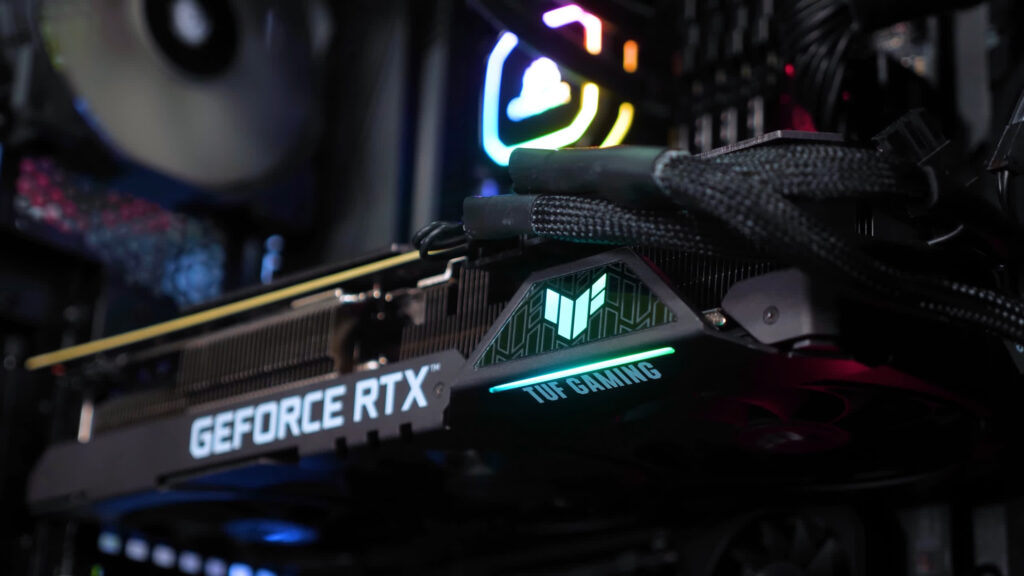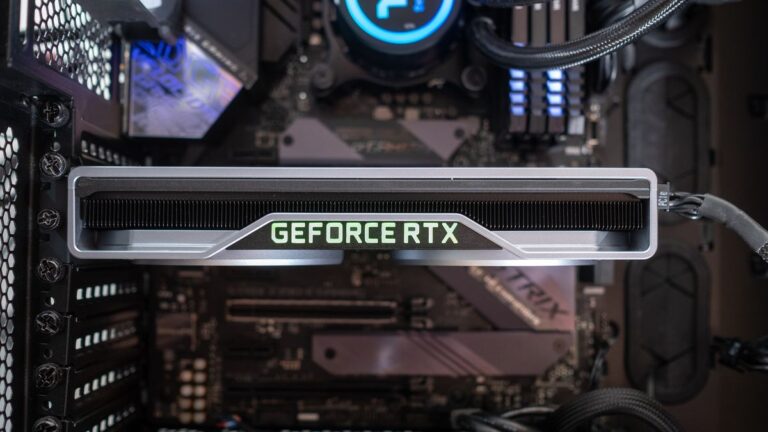When your computer fan spins, but the screen stays blank, a few things might be causing the issue. First, make sure your cables connecting the computer to the screen are securely plugged in. If that’s not the problem, it could be the graphics card misbehaving.
Then Test it on another computer to be sure. If the graphics card works fine elsewhere, the trouble might be with your motherboard. If your computer suddenly shuts off, the CPU could be the culprit. Sometimes, glitches in software or drivers can lead to display problems.
If you recently built your computer, check the internal connections. By looking into these areas, you can identify why your fan is spinning, yet there’s no display on your computer screen.
Here, you will see the cause along with the solution. Keep Reading!
Common Causes for GPU Fan Spinning but No Display

If your GPU fan is spinning but you’re not getting any display, there could be several possible causes for this issue. Here are some common reasons:
- Loose or Improperly Connected Cables:
- Ensure that the cables connecting your monitor to the GPU are securely plugged in.
- Check for any damaged cables and replace them if necessary.
- Incorrect Input Source:
- Make sure your monitor is set to the correct input source (e.g., HDMI, DisplayPort) that is connected to your GPU.
- Faulty GPU:
- The GPU itself may be faulty. Test the GPU in another system if possible, or try a different GPU in your current system to see if the issue persists.
- Power Supply Issues:
- Insufficient power supply or a failing power supply unit (PSU) can cause display issues. Ensure that your PSU is providing enough power for your GPU and other components.
- Driver Issues:
- Outdated or corrupt graphics drivers can cause display problems. Try booting into safe mode and reinstalling/updating your GPU drivers.
- BIOS/UEFI Settings:
- Check your motherboard’s BIOS/UEFI settings to ensure that the primary display adapter is set to the GPU.
- RAM Issues:
- Faulty RAM can sometimes lead to display problems. Try reseating your RAM or testing with different RAM modules.
- Overheating:
- Overheating can cause it to fail or not display anything. Check if it is getting too hot, and make sure the cooling system (fans, heatsinks) is working properly.
- Motherboard Issues:
- A malfunctioning motherboard may prevent it from functioning correctly. Test it on another motherboard if possible.
- Faulty PCIe Slot:
- The PCIe slot on the motherboard may be faulty. Try installing the GPU in a different PCIe slot if available.
- System Memory Issues:
- Problems with system memory can impact the performance. Make sure that your system memory is functioning correctly.
- Operating System Corruption:
- In rare cases, issues with the operating system can cause display problems. Consider performing a clean install of the operating system.
Troubleshooting Steps for GPU Fans Spinning But No Display
Fixing a running GPU with no display can be a perplexing challenge, but several troubleshooting steps can help resolve the issue. If you’re experiencing this problem, consider the following steps:
1. Initial Setup and Cable Check:
- For a new PC build or if you haven’t powered on your computer yet, start with an older display cable (VGA or DVI) to ensure compatibility and facilitate driver updates.
- Check for physical damage on the cables and ensure they are securely plugged into both the graphics card and the monitor.
2. Correct Display Port:
- Ensure the display cable is plugged into the correct port on the GPU, not the motherboard. Some CPUs lack integrated graphics, requiring the use of a dedicated GPU.
3. Multiple Monitor Consideration:
- If using multiple monitors, press WIN+P to access the Windows display dialog. Toggle between display modes to ensure the active screen is recognized.
4. Graphics Driver Reinstallation:
- If intermittent display issues occur, reinstall graphics drivers. Visit the AMD or NVIDIA download page, select your GPU model, and install the appropriate drivers.
5. BIOS Settings:
- A bad overclock can cause display problems. Reset the BIOS to default settings and gradually reapply changes to identify any problematic settings.
6. Reseat GPU and RAM:
- GPU and RAM modules can sometimes become loose. Power down, press the clips to release, remove, and then securely reseat them in their respective slots.
7. Power Supply Check:
- And then, check all power cables from the PSU are correctly connected. Inadequate power supply can lead to various issues, including a lack of display.
8. Consider New Hardware:
- If all else fails, consider the possibility of faulty hardware. A failing GPU, motherboard, or monitor might require replacement.
FAQ’s
1. Why are my GPU fans spinning but no display?
The likely culprits are bad display drivers or a failing cable. Plugging the cable into the wrong slot or encountering Windows or BIOS bugs could also be at fault.
2. Why is my GPU turning on but no display?
Ensure good ventilation and heat dissipation in your PC case. Excessive temperature inside may cause components to malfunction, leading to no display output.
3. What causes GPU fan failure?
Accumulated dust in the GPU can prevent the fans from spinning. Use compressed air to clean both the fans and the cooler while the PC is turned off.
4. Why is my GPU running but no signal?
Malfunctioning, improperly seated, or damaged GPUs can lead to a “No Signal” error. Overheating, hardware failure, or inadequate power supply to the graphics card may trigger this problem.
5. Can faulty RAM cause no display?
Yes, faulty RAM can cause a no display issue on a computer.
6. How to check if GPU is working?
Launch Task Manager on Windows 10 or 11, go to the “Performance” tab, and select GPU to view performance metrics such as memory usage and temperature.
7. Can CMOS battery cause no display?
Yes, a weak CMOS battery can lead to issues such as a “Time and Date Not Set” message on startup.
8. Can we repair GPU?
Yes, with the right equipment and skills, surface mount components and even the GPU itself can be replaced using a heat gun and soldering equipment.
9. How do I know if my GPU is defective?
Signs include graphical glitches, strange fan noises, frequent crashes, significant frame drops, and the blue screen of death.
10. How do I know if my GPU fan is failing?
Unusual sounds and overheating despite proper cooling may indicate a faulty GPU fan.
11. How do I fix my GPU not working?
Restart your graphics driver by pressing Windows Key + Ctrl + Shift + B to potentially resolve issues and get your graphics card working again.
Final Words
When faced with the perplexing situation of a spinning fan but no display on the GPU, a methodical approach to troubleshooting is essential. From checking cable connections to assessing the health of the graphics card, motherboard, and CPU, the diagnostic journey aims to pinpoint the root cause.
Further, whether the issue lies in hardware, such as a malfunctioning GPU, or in software, like outdated drivers, each potential cause demands careful consideration. By systematically exploring and addressing these possibilities, users can navigate the complexities of this problem and take appropriate steps toward resolution.
Also, Seeking professional help may be necessary for more intricate issues, ensuring a comprehensive and effective solution to the enigma of a spinning fan with no display on the GPU.

